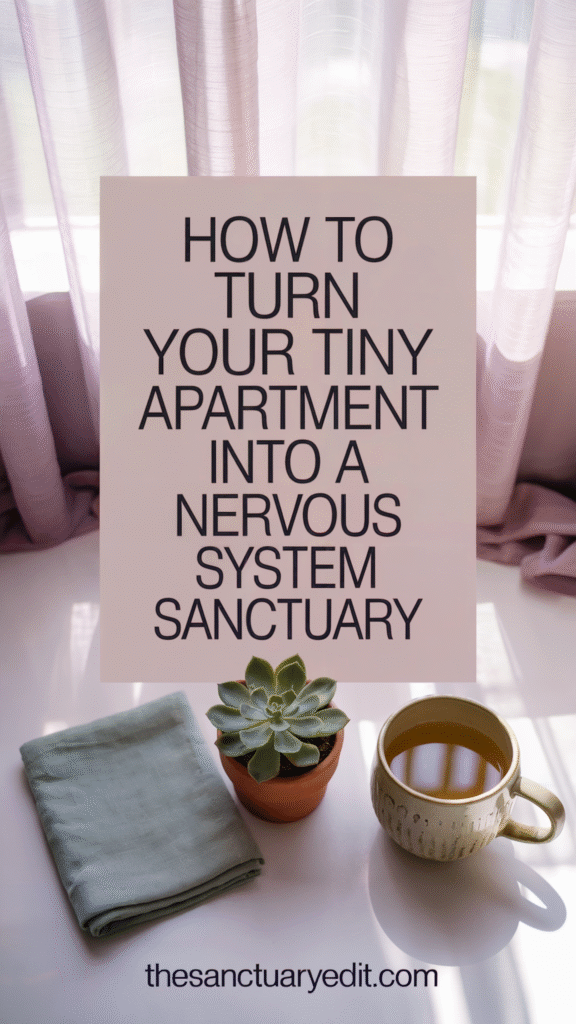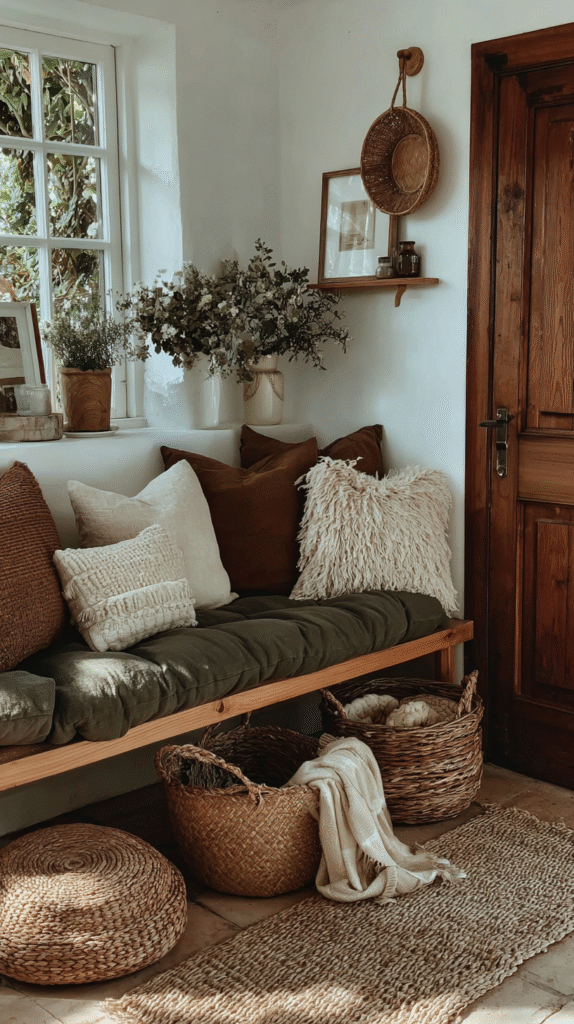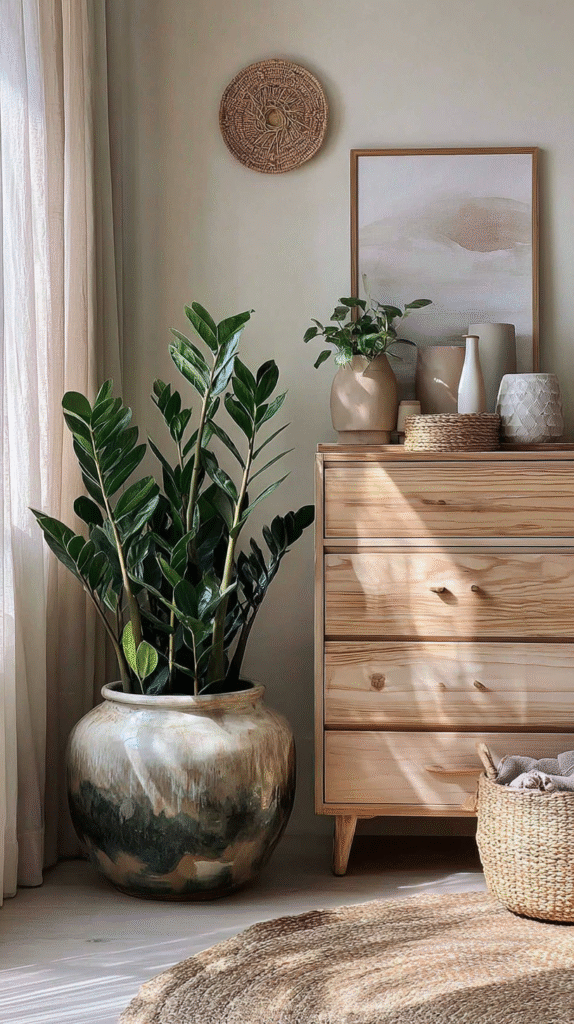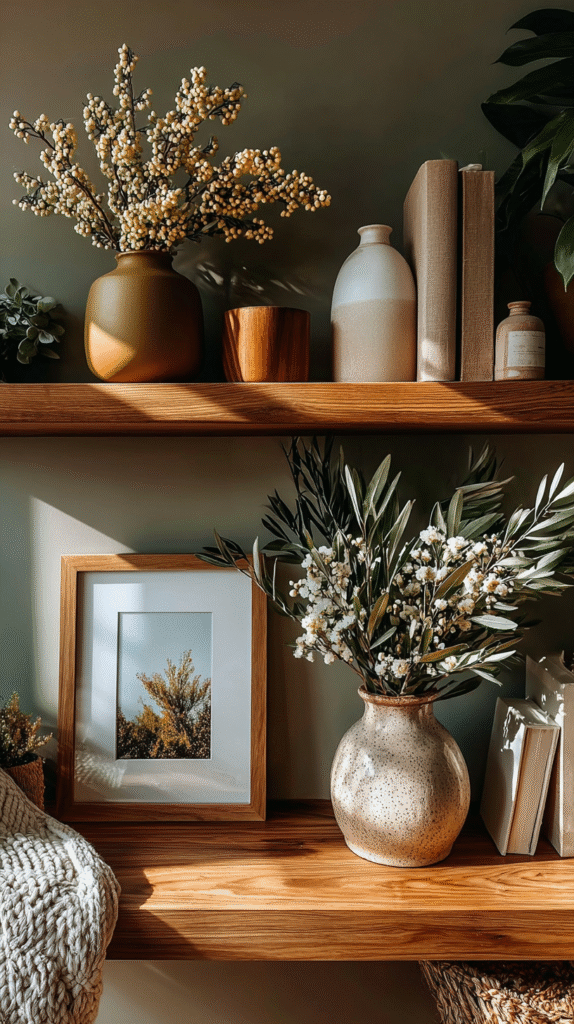This post may contain affiliate links, including those from Amazon Associates. If you make a purchase through these links, I may earn a commission at no additional cost to you. Learn more about our affiliate policy.
When you live in a small apartment, every corner holds weight.
The hum of the fridge, the stack of mail on the table, the glare from a ceiling light, it all presses closer than it would in a larger space.
For a nervous system already stretched by the pace of modern life, these little details matter. The good news is that creating sanctuary does not require square footage.
It requires intention. With thoughtful swaps and gentle edits, even the tiniest apartment can become a place where your body exhales.
This guide will walk you through practical ways to soften your space and bring your nervous system into balance, no matter the size of your home.
What Your Nervous System Needs From Home
A sanctuary begins with safety. Your nervous system relaxes when it receives cues that the environment is calm and predictable.
In practice, this looks like soft light instead of harsh glare, clear surfaces instead of visual noise, and textures that invite touch rather than repel it.
Small spaces can actually help here. Because every corner is close at hand, small adjustments ripple through the entire home.
A single plant by the window, a shift in lighting, or a cleared surface can transform the whole feel of the apartment.

Let Light and Air In
Natural light is one of the most powerful regulators of mood and circadian rhythm.
In a tiny apartment, maximize what you have. Swap heavy curtains for sheer fabrics that filter light but still provide privacy. Keep windowsills clear so daylight can reach further into the room.
If natural light is limited, use mirrors to reflect what you do have.
Position one opposite a window to bounce light deeper into the space and create a sense of expansion.
For ventilation, open windows when possible, even for a few minutes a day, to bring in fresh air and reset the atmosphere.
Switch Harsh Overheads for Layered Warm Lighting
Fluorescent bulbs and harsh overhead fixtures keep the nervous system in alert mode.
Replace them with warm LED bulbs in the 2200–3000K range for a softer glow.
Instead of relying on a single ceiling light, layer your lighting. A floor lamp in the corner, a table lamp by the sofa, or even battery-operated candles can create pools of light that make the room feel calm and inviting.
This layered approach signals to your body that the day is winding down. In the evenings, dimmer light supports melatonin production, helping you prepare for rest.
Declutter and Use Smart Storage

In a small apartment, clutter builds quickly, and every object demands attention.
Your brain reads this visual noise as work to be done, keeping you in a low-level state of stress. Choose one surface to clear completely and notice how it changes the feel of the room.
To keep things manageable, focus on storage that blends function and calm. Baskets under a bench, an ottoman with hidden storage, or floating shelves that lift items off the floor all create breathing room.
Assign a home to everyday objects so they don’t end up scattered. Gentle daily decluttering, even just a drawer or corner at a time, reduces overwhelm and makes the space easier to care for.
Define Small Zones for Big Impact
In tiny apartments, one room often serves many roles. Without clear separation, your nervous system can struggle to shift between work, rest, and play.
Create zones, even if they are only symbolic.
A small rug under a chair can signal a reading nook. A screen or tall plant can define a work area. A meditation cushion in the corner can become a reset space.
These visual cues help your mind and body switch gears, reducing the bleed of stress from one part of life into another.
Bring in Natural Materials and Greenery

Humans calm down in the presence of natural textures. Linen curtains, a wool throw, a wooden stool all offer grounding through the senses.
Choose a few tactile elements you touch daily: cotton sheets, a jute rug, or a ceramic mug. Texture carries more weight than color in helping a home feel lived-in and human.
Plants are another gentle way to shift the atmosphere. Even one thriving plant by a window can regulate air quality and remind you of growth.
If caring for plants feels stressful, try dried branches, fresh flowers, or botanical prints that bring the essence of nature indoors without ongoing responsibility.
For inspiration on simple, low-maintenance greenery, explore these easy indoor plants that elevate earthy decor.
Choose Calming Colours and Grounded Visuals
High-contrast walls or busy patterns can overstimulate in a small space.
A calmer palette creates visual quiet. Muted greens, soft beige, warm clay, or gentle grey-blues all help signal safety to the nervous system.
When painting is not possible, use color through textiles. Pillow covers, throws, or bedding are affordable ways to shift the atmosphere.
Keep wall art intentional: one or two pieces you love are more soothing than a gallery of items competing for attention.
Engage the Senses Mindfully
Your apartment can offer sensory cues that remind your body it is safe. Choose one element for each sense:
- Scent: diffuse lavender or cedarwood, light a beeswax candle, or hang eucalyptus in the shower.
- Sound: play soft instrumental music, nature recordings, or use white noise to soften city sounds.
- Touch: keep a favorite throw nearby, use a wool rug by the bed, or layer cushions in natural fabrics.
By engaging the senses gently, you give your nervous system consistent reminders that it is time to rest.
Create a Screen-Free Reset Zone
Technology is useful, but constant input leaves little space for stillness. Designate one chair or corner as a screen-free zone.
This becomes a place for reading, journaling, or simply sitting in quiet. Protect it by keeping chargers and devices elsewhere.
Ritual helps reinforce the boundary. Light a candle when you sit, pour tea into your favorite mug, or wrap yourself in a blanket. Over time, your body will associate that corner with restoration.
Build Rhythms Into Your Space

Beyond design, the way you use your apartment shapes how it feels. Anchor daily rhythms in your environment.
Brew tea at the same table each morning. Read a few pages before bed in your designated nook. Stretch on the rug before sleep.
These consistent cues help your nervous system regulate, just as predictable routines soothe children.
The key is not perfection but repetition. Over time, your body learns that these small rituals mean safety and rest.
Keep Only What Brings Calm and Joy

Objects carry energy. If something feels heavy, carries a negative memory, or simply adds clutter without purpose, let it go.
Keep what affirms who you are today. Display items that remind you of beauty, travel, or connection.
Editing your belongings this way ensures that what surrounds you uplifts rather than drains. In a small space, every item counts. Let each one contribute to calm.
Gentle Tips to Make the Process Manageable
Transforming your apartment into a sanctuary does not need to happen all at once.
Start with one small swap. Replace a harsh light bulb with a warm one. Add a plant. Clear one surface. Notice how even a single shift changes the feel of your space.
Move slowly, room by room or corner by corner. Celebrate progress rather than perfection. Remember: a nervous system sanctuary is not about aesthetics alone. It is about how you feel when you are home.
Closing
Your tiny apartment can be more than a place to sleep. It can become the sanctuary where your nervous system settles, where you find grounding in a busy world, and where you feel safe to exhale.
With light, texture, rhythm, and intention, even the smallest home can hold immense calm.


